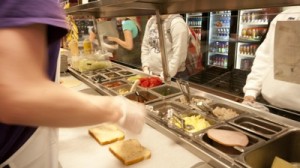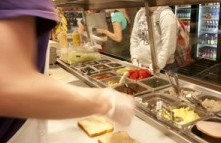
The same freeze in Florida and other southern states that killed off St. Thomas’ tomato supply has also affected the supply of red peppers. The freeze caused the drop in the product, causing a great demand for the vegetable and prices to increase.
“Red peppers are very expensive,” Director of Dining Services Todd Empanger said. “They increased from around $30 per case to $80-90 per case. Green peppers are fairly expensive, $30-38 case, but we are still purchasing them.”
But unlike the lack of tomatoes, St. Thomas students have barely noticed the lack of red peppers.
“With the tomatoes it was a big deal, but I haven’t heard any complaints about the peppers,” freshman Tracy Johnson said.
Johnson and other student food service workers have not received as many complaints about the missing red peppers.
“The students seem to be less upset about them being gone than when the tomatoes disappeared,” senior Sarah Pikkarainen said. “It is really nice to not have to cut red peppers in the morning while I’m setting up the deli, however I’m a fan of the vegetable and I miss eating them. So even though it will take me longer to do prep work in the morning if they need to be cut, I’ll be happy to see that they’re back again.”
Sophomore Tim Speake isn’t so concerned with the missing peppers.
“It’s not really that big of a deal,” he said. Plus, people can still get green peppers.”
Red peppers will return to campus once the price decreases.
Meg Tvrdik can be reached at tvrd0386@stthomas.edu.


A drop in supply has nothing to do with demand for a good. Just sayin’. Supply falls, price rises, demand stays the same.
There might be more of a story than just a decrease in supply and prices increases. Being that the summer months are just around the corner, demand may have spiked due to buyers tastes and preferences. A shift in demand here could cause a price increase only AFTER the supply had decreased. So, one could argue that demand could have caused a further price increase.